The Real Market with Chris Rising – Ep. 80 Bret Hardy
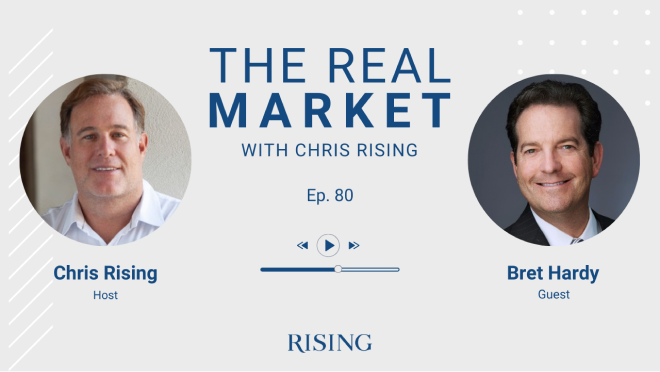
The Real Market with Chris Rising – Ep. 80 Bret Hardy
Podcast: Play in new window | Download
Chris Rising (00:02):
Welcome to The Real Market with Chris Rising. The only podcast that brings the real estate conference panel to your headphones. You’ll hear from superstars from every realm of commercial real estate. The biggest brokers, the most well known architects, the largest investors, and the most visionary developers. Will learn what they do, how they do it, and what drives their success. We’ll discuss the latest trends across regional markets, capital flows, both national and global, and we’ll explore technology’s role in shaping all of them. We’ll take a clear eyed look at where we’ve been, where we are now, and what’s to come. Real conversations, real experts, real insights. This is The Real Market.
Chris Rising (00:50):
Welcome to The Real Market with Chris Rising. Very excited to have Bret Hardy with me today. I’ve known Bret for a long time. He is one of the premier industrial brokers in the country. He’s moved over to Newmark and built quite a business there. And I’ll tell you, with everything that’s going on in industrial, Bret, I just feel like the world could not have changed more in the last, I don’t know, six months, seven months. It is radically different. So I’m so excited that we’re doing this conversation right now.
Bret Hardy (01:21):
Well, hopefully you can say the same when we’re done talking.
Chris Rising (01:25):
Well, you and I have run across each other over the years. Certainly you ran across my father and his team at Catellus over the years. And one of the things that I have found remarkable about what you’ve been able to do is that you’ve taken a business, which I think we all would agree that in the ’80s and ’90s stood second fiddle to the office side and grown with it and become a leader in the business of selling assets and buying and selling assets. Before we get going, was that the game plan 20 years ago, 25 years ago? Was industrial real estate … Did it grab your heart from the beginning?
Bret Hardy (02:08):
Well, Chris … And I’ll not make this too long winded. I think that I got interested in industrial when I was nine or 10 years old. My grandfather on my father’s side, he was a general contractor and said, “Wow. We’re putting all kinds of money in these pockets of these developers in Los Angeles. Why don’t we play that game?” So I remember driving around with him as a fairly young kid watching CTU, tilt wall construction go up on buildings he was building for his company. By the way, that was with Stu Klabin. Klabin Company. So he and Stu and John Sullivan were all partners for years in building industrial. So I got interested there.
Bret Hardy (03:01):
I grew up in Simi Valley and went to school all the way at USC in Los Angeles. So I made that big 40 minute trek. But I was told at young age to get a finance background to understand the underpinnings of the finance side of the business was smart. So I got my degree in accounting and I went to Pricewaterhouse and I got lucky enough where I got put into a group of Pricewaterhouse in Newport Beach where my clients were the Irvine Company and coal company. So I spent a few years at Pricewaterhouse, then got the opportunity to go to the Irvine Company and was controller there for a number of years. And that’s where I really fell in love with industrial again. As controller for the office and industrial investment properties group there. I had exposure to both.
Bret Hardy (03:56):
And as much as it’s fun to walk in and see these beautiful office build outs and office towers, I really have always enjoyed walking into an industrial space and seeing the difference in how industrial buildings are used from warehouse, distribution, racking systems, pick and pack operations to the other side, which is manufacturing operations, where they’re making widgets, where they’re doing plastic protrusion, where they’re doing manufacturing. I’ve always been in awe of the technology and the innovation and so forth that goes into those buildings.
Bret Hardy (04:38):
So I’ve always been drawn to industrial and with the finance background, industrial capital market seemed to make the most sense. And certainly that’s played out pretty well the last couple of years.
Chris Rising (04:49):
Yeah. I had known and just hadn’t focused on it. For you to go from being a controller to a company like Irvine Company and secure job, a place that you know that they’re going to be able to keep the lights on. Tell us about how you did the move over from that to becoming a broker. Because that’s a tough thing to do to go from having a salary, starting to raise a family, starting to do that stuff, and then deciding what brokerage is where I want to spend my time.
Bret Hardy (05:22):
Yeah. Listen Chris, thank you for asking. It was not a plan. I didn’t put a business plan together that said, hey, this is the path that I’m going to take. To some degree, it’s all about gravity or inertia. I really, really enjoyed my time at the Irvine Company. It was hard work. I went there right into the real estate recession of the 1990s, early ’90s. And I remember starting at the Irvine Company and there were 1700 employees and when I left six or seven years later, we were down to 250. A lot of that was outsourcing. It was Don Bren making the decision to outsource property management and leasing and those responsibilities to third parties. And some of it he’s brought back in house and some of it he’s outsourced again. But anyway, it was a great proving ground, great training ground. I got to work with some of the best in the business. Mike Lutton, who I really looked at as being a mentor throughout my career. Gary Vaccaro and John Tsu and Clarence Barker and so many really, really smart, savvy real estate leaders of our time.
Bret Hardy (06:45):
And so it was a great experience. But I was on the accounting side of it. I was on the finance side of the business and I really liked the work that I saw the guys on the leasing side and on the acquisition side doing. I was drawn more to that and so made the decision to get out. And the way I did it is I left the Irvine Company and went to Watson Land Company, which is a bell cow group in the south bay. Went to work with Dick Cannon and Tony Manos and the team over there. I was there for a pretty short period of time, which is really the impetus to me being where I am. Mike Lutton left the Irvine Company and went and took over as chairman of PM Realty Group. And he called me on the phone and said, “You’re coming with me.” And so I went with Mike to PM Realty.
Bret Hardy (07:38):
And PM had designs on becoming a global real estate service powerhouse juggernaut, but ultimately a few years after I got there, I realized that it’s a property management company and a great property management company. It’s really burgeoned into something bigger now, but that was back in the late 1990s. And so I had to figure out what I wanted to do. And I was lucky enough that Chuck Hunt and Brad Cox and the guys over at Cushman & Wakefield in Los Angeles said, “Hey, come on over here.” So I went over and started a structured finance team over at Cushman & Wakefield and had a great run there for some years and then went over to Colliers and that’s where I got into, from a brokerage standpoint, really the industrial capital market space and had a really nice time at Colliers for 17 years, but left there five years ago and came over to Newmark to join a large capital market platform.
Bret Hardy (08:47):
And so I’ve got some great partners here. Jim Linn, who is formerly CenterPoint Properties, Talos Capital, Blackstone joined about three years ago. And then couple years ago before the pandemic, Andrew Breiner, who was at CB and then was running HFS capital market platform for industrial came over and joined. And then we are aligned with Kevin Shannon and his team. So we’re focused here at Newmark on west region industrial capital markets. We look at the markets from Seattle to San Diego and Denver west. By the way, that’s five billion square feet of industrial institutional real estate and 99 sub-markets. So it’s not a small region by any stretch. That’s the evolution of it.
Chris Rising (09:35):
That’s terrific. Well, I’m glad we went through it so people see the expert that I know you to be. Let’s dive into the markets. I mean, you are in one can argue the hottest industrial markets in the country being in the inland empire and near the ports on the west coast. When someone says to you, “Hey, I understand you’re an expert on industrial on the west coast or the western region,” what does that mean?
Bret Hardy (10:04):
Well, first, I am as quick as anybody to tell you what I’m not good at. And maybe that’s a sign of being an expert at something. I don’t know. My team is purely capital markets focused. So we’re really looking at the capital stack. And what we do 98% of the time is we’re being hired by our institutional clientele to go out and sell. Represent them ultimately in the sale of their industrial real estate. And that has an equity component and it has a debt component to it. So I guess the first thing to answer is when I get a phone call yesterday from somebody saying, “Hey, we really need to do a deeper dive in Salt Lake City to really understand the Utah County sub-market and what’s happening from a tenant demand standpoint and from a leasing and rental rate standpoint,” just as an example, I am the first to say I’m not the right guy. We’re not the right team to talk to about that. That’s where you want to go and talk to Kyle Roberts and Jeff Heaton and the team that sits in that market and is dealing with tenancies and on the agency side.
Bret Hardy (11:24):
But when it comes to that same phone call saying, “Hey, we’ve got a project in Utah County and it’s a leased industrial investment sale and we have an interest in figuring out what the value of that is. And should we look at selling this asset today?” That’s something that our team does. And so we will partner with the local market talent and we’ll go out and execute. And again, I bring up Salt Lake City and Utah County as just an example. That’s a phone call we get from Seattle to San Diego and Denver west.
Bret Hardy (12:01):
So really the expertise is more capital flows. It’s how is financing occurring? And we work with a wonderful debt team here at Newmark run by David Milestone and Brett Green. They are the best in the business. We work with them on every transaction, but it’s really understanding how you would finance an acquisition of a building that we would sell and then where is the equity coming from? There’s foreign capital, sovereign wealth, you’ve got domestic core funds, domestic value add, you’ve got public private entities. So across the spectrum of investment, it’s our job to understand who is active and what type of product they’re active in, and make sure that we bring the right type of buyers and financing to the right sale opportunity.
Chris Rising (12:50):
So where do you think we are? I know you and I were together not that long ago in Texas and I heard a very, I would say optimistic view of the world, which was appropriate. Has it changed since October?
Bret Hardy (13:04):
Yeah.
Chris Rising (13:04):
Can’t even remember when that was. That was in April I think. No, that was in March, wasn’t it?
Bret Hardy (13:09):
Yeah, it was probably March. I’d have to go back and think about it too. Listen, we would love to sit here, Chris, and believe that Newmark is going to be shielded somehow from what’s happening in the global macroeconomic environment. But the reality is this. Debt prices equity and equity prices real estate. And so we were somewhat immune to the increase in the indexes, the treasury and the SOFR indexes initially. It then trickled into long term multi or single tenant net lease. So long weighted average remaining lease term projects. So a 12 year Amazon or Proctor & Gamble lease, or maybe a park that’s got a 10 year remaining lease term. It certainly impacted that because of the financing of those long term projects. When you could borrow at a two and a half or sub two and a half synthetically, it allowed you to be aggressive. It allowed you to be in the twos and the low threes from a cap rate standpoint. As the borrowing now has creeped closer to five, it’s really difficult on a long term project to underwrite in a sub three.
Bret Hardy (14:42):
So we found that the long term leased projects were impacted first. But what’s happened now, again, because of the … It’s really two things. It’s the debt environment. It’s the liquidity. The access to low yield capital from a debt standpoint. But also, there’s a concern out there relative to a recessionary environment and what that’s going to do from a tenant demand standpoint. Those two factors have weighed large in how investors are looking to underwrite leased investment. And now what we’ve seen is we’ve seen an impact from one side of the industrial investment spectrum, which would be land acquisition for future development, all the way to the other 180 degrees on the other side of the spectrum, which would be your industrial long term single tenant net lease, or multi-tenant net lease product. All of it has been impacted from a value standpoint.
Bret Hardy (15:43):
Now I say that, but the sky is not falling. And we can go anecdotally for the next couple of hours through this. But if you look at December of 2019 at where industrial was pricing in the United States nationally, and you look to where industrial was at the height of the market … Let’s call it February of 2022. So what is that? Four or five months ago. There was a 40% increase in values from December of ’19 to February of ’22.
Chris Rising (16:23):
Wow.
Bret Hardy (16:25):
So that’s getting you pre pandemic, through the pandemic to where we are today. 40%.
Chris Rising (16:29):
That’s a pretty astounding number.
Bret Hardy (16:31):
It’s astounding.
Chris Rising (16:32):
Just in a short period of time. Three years, four years.
Bret Hardy (16:34):
It’s astounding. But it’s part of the reason why I got involved in industrial too, is as I said early, it’s just people are buying product from Amazon. I had an Amazon delivery literally as we’ve been sitting here on the phone. That’s not going to wane. But my point of bringing up the 40% is if we have a 15 to 20% impact to our high values … So in other words, values for industrial because of what’s happening in the macroeconomic or the debt markets and its having a 15 to 20% impact on values. You’re still 20% over where industrial values were from December of ’19. And Chris, if I said to you, gee, you’re going to go buy that project in Stafford, Texas. Rising Realty Group’s going to buy in Stafford in December of ’19. And I told you that in August of ’22, it’s going to be worth 20% more than what it was in December of ’19, you would say, “Where do I sign up? What dotted line do I sign up for?”
Bret Hardy (17:48):
That is hyperinflationary value growth, compounded annual growth and value that we would all love to see. So I think the yields in industrial, the cap rates, which is the easiest way to discuss it, right? The cap rates in industrial were so low, but they were artificially low due to the cost of debt. The extremely low bargain basement low floater cost of debt for quite a long period of time. It was liquid money. It was cheap money. And for industrial nationally, even in tertiary markets, it was pretty, as I said, liquid to get. So that really caused the impacts. So I-
Chris Rising (18:40):
Well-
Bret Hardy (18:41):
Go ahead.
Chris Rising (18:41):
I was just going to ask, how much of what you saw financed from ’19 to ’22 was CMBS debt versus how much was more insurance company bank debt? I guess what I’m really getting at is what are you seeing is the difference? Is it the fact that if somebody gives a loan today, who’s a lender, they can’t sell the eight pieces right now and so that’s backed them off, or is it the absence of CMBS debt in the market right now?
Bret Hardy (19:09):
Yeah. To the original question, a majority of the large portfolio acquisitions, larger 200 million plus acquisitions that were financed during that time period were done so using CMBS financing. It allowed you from a capital stack standpoint, a higher leverage position at very attractive rates. So CMBS really dominated the portfolio market. I would say that banks, debt funds, and insurance Life Co financing dominated the one off acquisitions. And we’re still seeing that there is some liquidity in the market for those. There is no liquidity right now in the CMBS market. So trades of portfolios, trades of large positions of 200, 250 million plus as of August 4th of 2022 are very, very difficult.
Bret Hardy (20:32):
The bidder pool is very small. It’s got to really check a lot of boxes. It’s got to check quality of location, quality of physical real estate, quality of the credit that sits within those buildings and quality of the lease structure. The four Q’s as I like to call it. Those financings need that, but it’s not coming from the CMBS market. And as a result, the bidder pools are strained right now in that market.
Chris Rising (21:04):
We’re certainly seeing that firsthand on a big portfolio we’re bidding on is as aggressive as we’d like to be on rent growth or anything like that, the pushback is all coming on the debt side. I think at the end of the day, no one really is in the mood to buy a negative … They’re not going to buy something at a cap rate lower than their debt. There was a time when maybe people would do that, but it doesn’t feel like it right now.
Bret Hardy (21:29):
Yeah. We’re seeing a pretty big bifurcation in the market right now. If you’re five years plus on your WALT, even if you are significantly below market rent, but if you’re five years plus, it’s tough right now to find the right bidder pools to get really aggressive pricing. Pre adjustment. Fourth quarter of 2021 pricing is very difficult if not impossible to come by. If you’ve got inside two years, there’s still a pretty robust market. So we’re talking about inside two years from a remaining lease term with rent growth.
Bret Hardy (22:13):
So I’ll give you an example. We’re hoping to go non-contingent on a project today and here I am. Hopefully this isn’t published for a couple of days.
Chris Rising (22:21):
It won’t be. It’ll be a while.
Bret Hardy (22:24):
We’re hoping to go non-contingent on a project. It’s got a three year remaining lease term. It’s 50% below market rent. 50%. We’re going to likely close it at a two two cap. But the mark to market on that is close to a five. And in this particular market, if you were to build this … And this is a 2015 constructed class A bulk industrial building. If you were to construct it today, it would cost $350 a foot. You can buy it at 280 at a two two cap. And you would build it today at a high four untrended total return on cost. So if you would build the same building today, take development risk, and you’re going to do it to an untrended high four to a five, why not buy it when you have none of the development risk, you can buy it at 60, 70, $80 below replacement cost, and you can get a huge mark to market event, even untrended rents close to where you would try to get a development yield in a couple of years. So that’s an example of what we see trading today.
Chris Rising (23:38):
In your mind, how does the buyer approach debt in that situation? Do they-
Bret Hardy (23:42):
Yeah. Most of them are not going to finance. So the best buyer pool for those are going to be all cash. What they’re going to do is they’re going to roll it to market in year three, and then they’re going to go out and get most likely Life Co financing at that increased value. Probably given the entities that we’re bidding on it, which are domestic core funds, you’re going to still have a lower levered 50 to 60% loan to value three years from now, but you’re going to hold it all cash until then.
Chris Rising (24:15):
Well let’s take a look at the buyer pool out there. One of the things that I find amazing, having been in the business so long, the industrial business itself was really the way you described your father’s involvement in it. And then in the 2000s and all you had the Catelluses and the Prologis come around, but now you have this whole universe of operating companies that have teamed with big private equity firms. So whether that’s Dogwood with TPG or Link or IDI. It just amazes me how much money is backing what are basically asset management groups. They’re not really buying developers anymore. They’re buying assets and creating teams around it and calling it a company and then they’re trading those big portfolios. What do you see them doing? You hear about that Blackstone’s raising $2 billion a month, and I’m sure that’s probably tapered off. They’ve got to get money out. How do you see those kind of people reacting in the market we’re in today?
Bret Hardy (25:18):
Well, first, you talk about TPG and Blackstone and some of their brethren. The Starwoods and the KKRs and the Oaktrees. These are really, really smart people. This is the easy side of the business for them. What we’ve seen today … And Chris, some of it has to do with a bit of a lull that we see at this point in time during the summer. Okay. You and I had trouble getting this discussion on the calendar. I had to go on a vacation and then I had to go to my daughter’s graduation. And there’s things going on. And so we always see a little bit of a lull during the summer. Listen, I’m not trying to make that the case of what’s happening. What we’ve got right now is an uncertain global macroeconomic environment.
Bret Hardy (26:19):
And by the way, in late 2007, we learned that if a butterfly flaps its wings in Brazil, we all feel the effects. So it’s tough to say, gee, what’s happening right now from a inflationary perspective, doesn’t impact commercial real estate, which is generally viewed as being an inflationary hedge. It impacts. What we’re seeing though with the really smart groups right now is just a bit of a pause. They’re not out of the market. They’re not pencils down, but they’re pausing. And what I think I would tell you is they’re still buying, but they’re really selective at what they’re looking at. In fact, some of them might just not engage with us on an actively marketed deal where we’re out soliciting the entire universe of population pool of potential bidders.
Bret Hardy (27:25):
If it’s an off market deal, though, when it hits … Remember the buckets I talked about? The four Q’s. If it hits those, they’re probably apt still to move forward. But they are really, really cautious. And they’re being really selective as to what they’re looking at. And it’s got to fit all of the boxes. Now, they’re still raising money. And there’s a lot of capital. I think that if you interviewed the odyssey funds of which there’s, what, 38 odyssey funds that make up the index, I’d say most of them are still raising money. Certainly well off the pace that they were on six months ago or nine months ago. They’re still raising money. And a lot of it is earmarked for industrial.
Bret Hardy (28:12):
We talked to the odyssey funds and if you go back nine months ago, I would say a third of them were over allocated to industrial, yet they had increased their industrial capital investment mandates. So even though they were over allocated to the sector, they looked at the risk return and continued with more mandates into the industrial sector, as opposed to investing in office, senior assisted living, multi-family, retail or other forms of investment for their CRE dollars.
Chris Rising (28:48):
Let me ask you this because you just brought it up. How would you as a broker define an off market deal?
Bret Hardy (28:54):
Yeah. Boy, Chris, an off market deal would generally be … By definition, if you were going to look at the dictionary, it would be, hey, we’re going to take this to our top two or three groups. These are our best clients. We’re going to go talk to our top two or three. The reality in this brokerage business … And I hope I’m not giving out trade secrets. We’re best friends with 50 groups. Or at least we want them to know that. So an off market is I’m not posting it up on a multiple listing site. I’m not shooting it out to 17,000 unique emails, mass marketing. We know who the bitter pool is for a particular type of investment and we’re going to call the groups that we have the best relationships with, that we know have funds earmarked for that particular type of deal. That’s an off market.
Chris Rising (29:56):
That makes sense. And I think that’s very fair and I think most people recognize that. Let’s move over to something that I also have found interesting over the last 10 years is that markets that we would call 10 years ago, 20 years ago, tertiary markets, second tier markets, those terms don’t apply to places like Utah anymore or Phoenix. Can you talk about where you think the hottest markets are and the best? And when I say hot, maybe that’s not the right word. The best markets to invest in, you believe from today going forward. And maybe there are one or two that have dropped out that you want to say, five years ago, I would’ve told you that’s the market, but not anymore.
Bret Hardy (30:38):
So for those listening, Chris and I had no conversation leading up to this discussion.
Chris Rising (30:45):
None.
Bret Hardy (30:46):
But we talk about these things. We talk about them every day. Let’s jump into it. First, let me say this. I do, as I said, at the very beginning, industrial institutional capital markets work. We sell leased investments on behalf of institutional clients. So I bring it up because when you look at my toolbox, I’ve got a hammer in my toolbox, and I look at every problem as a nail. So I may give you an answer right now that you can talk to five other people and you’ll get five different answers based upon what they do. So I’m only focused in the west region. So my attitude is who in the world wants to invest in Chicago or Dallas? We’ve got the best industrial markets in the country that sit here Denver west and Seattle to San Diego. So I’m very biased towards the west region. But here’s what I will tell you. We used to consider markets such as San Diego, Phoenix, Las Vegas, Reno, Salt Lake City, Central Valley, Portland, Boise, we used to consider those secondary markets.
Bret Hardy (32:10):
There were tertiary markets that were suburban industrial markets to those secondary markets that I just listed. But we used to consider them secondary. And the reason is because you had a higher beta, higher risk investing, developing industrial in those secondary markets, but you got rewarded for that in the form of higher yields. So you used to be able to go to Las Vegas four years ago and you could get on a total return basis, so unlevered internal rate of return basis, you could get 250 to 400 basis points, BPS, of additional yield by investing in those markets. That was your risk premium that you got because you were going into a higher beta market. On a cap rate basis, it was probably closer to 125 to 150 BPS. So you could invest in LA years ago at a four cap and you could get a five and a half in Phoenix or Reno or Portland.
Bret Hardy (33:26):
We saw a significant shift to the point where we no longer consider San Diego and Phoenix and Vegas and Salt Lake and all these markets I just mentioned as being secondary. We call them tier 0.125 markets now. It’s easy to sit and say, well, your bell cow industrial markets are Seattle close in, in Kent valley. It’s the east bay I880 corridor, which Catellus crushed it in as one of many markets. And it’s the five to six sub-markets in metro Los Angeles. Those are your bell cow industrial markets. And why? They’re port centric. You’ve got the ports of LA and Long Beach. You’ve got the port of Oakland. You’ve got the ports of Seattle. You’ve got incoming product that’s coming in from the east into those ports that make up well over half of the inbounds into the United States from the west coast to New York and Miami. Just a vast amount of product. In fact, 40% of it comes in through the ports of LA and Long Beach and goes east.
Bret Hardy (34:40):
So those were port driven markets. But what we learned during and coming out of the pandemic is the importance of the eCommerce aspect to industrial and the importance of onshoring of manufacturing back here in the United States. And so we’ve become just as accustomed to the importance from industrial perspective. It’s not just about being port centric. It’s about being centered around rooftops. It can almost be that simple.
Bret Hardy (35:20):
Now, what’s really buoyed the markets like Phoenix and Vegas and the inland empire east, you used to as an … Excuse me, not industrial. But as a 3PL shipping logistics company, you used to be able to have your warehouse sitting in Torrance or Carson, and you could get four to five, maybe even six turns at the port of LA and Long Beach per day, whereas if you were in Riverside, you could get one. Frankly, if you were in Las Vegas, you could get one. So now what we’ve seen is if you’re sitting in Carson and Torrance, you’re getting one and a half turns a day because of the backlog of product. And we see that as more of a trend that’s going to continue, not something that’s going to weed out. So you don’t have the ability to say, “Gee, I’m going to put my warehouse in Torrance and I’m going to be able to get five turns on a container or containers a day.”
Bret Hardy (36:28):
It’s now one and a half, two a day versus going someplace where the rent is considerably cheaper and the facilities are more modern, which is in some of these what were formally secondary markets. You add something like Vegas, where if you look at Vegas, you may see from a bird’s eye aerial on Google Earth that it looks like there’s land forever, but that’s just not the case. You look at Vegas and north Las Vegas, and it’s owned by the Bureau of Land Management and it’s owned by the Department of Defense. Vegas in the southwest and in the north are rapidly becoming infill markets where it’s high barriers to buy product to build new industrial and it’s a market where the state of Nevada is really, really supportive of manufacturing uses and industrial uses. It’s a labor laden market.
Bret Hardy (37:28):
It’s a state that has no state income tax. So all of a sudden, when you look at gee, I could get a container from the port of LA and get it to Vegas in a day and I’ve got all the benefits that come with brand new industrial real estate in a state that’s supportive, in a city that’s supportive and no state income tax, these secondary markets are now becoming primary markets. And unfortunately, if you’re at Rising, it’s more expensive to buy in those markets today.
Bret Hardy (38:01):
So it’s a very holistic change in how we buy commodities, how we buy services and products coupled with very elementary root issues of respective regions, municipalities, state governments, and how they’re acting. Nevada, Arizona have benefited tremendously. Texas has benefited tremendously by just how they treat manufacturing companies. How they treat companies in those markets. And a lot have moved out California and Oregon and Washington to go to these friendly markets that are now tier 1.25 markets.
Chris Rising (38:55):
Well, let me ask you, because this is really interesting how we’re saying that the markets have evolved. Let’s talk a little bit about how the real estate has evolved. I remember in 2000 people making a big deal about dock heights and clear heights going from 24 to 36 to 48. Now you hear about Amazon building 90 foot buildings to get all their distribution and all. How has that become more valuable or is that so specialized, it’s only valuable in the sense of the credit of the company that’s leasing it? What have you seen just about how industrial real estate is being built today and what it does to value compared to buying something built in the ’90s or 2000s?
Bret Hardy (39:40):
Yeah. I use the term bell cow to describe Seattle, east bay and LA, but from a real estate perspective, the best quality industrial real estate is going to be incredibly flexible. So it’s going to be designed with the ability to bifurcate into multiple units. Allowing for significant dock high loading, large truck yards with large truck turning radius and excess trailer yards. So if you bought industrial in LA, class A could be defined as being 24 and 28 foot clear with one doc door per 12,000 square feet, with 135 foot truck court. In the inland empire, a class A is going to be 36 to 40 foot clear. It’s going to have one dock high door per 5,000, 6,000 square feet. It’s going to have 185 foot truck courts. It’s going to have significant excess trailer parking for trailer storage and container storage.
Bret Hardy (41:08):
It’s going to have office pods on the corners of the buildings allowing you to bifurcate into smaller units for maximum flexibility. So I think that’s the state of the art today. The product that’s got those physical characteristics. When you start looking at clear heights and you start looking at multi-story buildings or buildings that are 70 foot clear with four stories of mezzanine, those are still considered to be specialized assets. There are not a lot of companies that have the ability to operate within those. So what you’re looking for, if you’re investing industrial real estate is, I want to buy a building where I’ve got the ability to lease that property to as many different industrial users as I possibly can. From manufacturing to 3PL and all points in between. Start looking at a 70 foot clear four stories of mezzanine building that is an automated pick and pack operation, you get a lot fewer companies who are able to operate in that type of building even if you look 20 years into the future, and who knows what 20 years is going to look like. But the reality is that’s where term and credit becomes so much more important.
Bret Hardy (42:37):
Now I mentioned multi-story. We can see a world where in the South Bay, Los Angeles, in the LAX airport region, you’re going to start to see some multi-story industrial go up. Land prices are dictating it. Rental rates are dictating it. The cost of construction’s dictating it. You’re seeing it in Manhattan as we speak with multiple projects. I was on the phone yesterday with Goodman that’s building a large six story multi-story Manhattan based industrial project. It is fascinating how they’re doing it. You’ve got Georgetown up in Seattle that was built and leased by Prologis. That is a wonderful project. Home Depot, I think, is the main tenant in that project.
Bret Hardy (43:24):
We’re going to see some more of those. Those are going to be looked at as being less specialized, because they’re still flexible. The use on the top might be a sprinter van where you come in with sprinter vans and you load up and you go out to homes. Rooftops. The bottom floor might be your standard industrial 36 foot clear type of use. So even though it might look specialized from a utilization standpoint, it’s still very flexible. So that’s much different than a 70 foot four mezzanine pick and pack operation.
Chris Rising (44:02):
What role or where do you see the multi-tenant light industrial? Something that used to be called class B, which I think is being rebranded as kind of business parky, but you’re still under 20% or 30% office. Distribution in the back. Communities have grown out to … Probably could never build it again. Never get it entitled where it’s at today. Where do you see that? There’s a lot of that across this country. It all looks a little different. I find in North Carolina, it’s probably metal or tin and then you’ve got the corrugated rock in Texas. And you’ve got the traditional tilt up in California. But it’s serving the same purpose. It’s serving the purpose for the 2,000 to 5,000 to 20,000 square foot tenant. And it’s below where you’d see Catellus play or some of these other … Prologis sorry. Prologis play. Where do you see that in the market today? How that’s performing.
Bret Hardy (45:00):
That’s where my money would go. A vast majority of industrial users in the United States are small companies and large companies that occupy what we consider to be shallow bay incubator industrial. They don’t need million square foot warehouses. There is a huge demand for that product and that product’s not being built these days. It just isn’t. It’s expensive to build. If you have the ability to get entitlements, you build mid bay and bulk industrial. And by the way, that’s more institutionally desired. But there is a massive tenant base that occupies shallow and incubator industrial. And I got turned onto that product when I was at the Irvine Company going all the way back 45 minutes ago in this conversation.
Bret Hardy (46:06):
We did an analysis at one point that was asked of us by Dick Sim who led the Investment Properties Group, where he said, “I want to look at what our tenant base was in our incubator Irvine spectrum project product.” And this was mid ’90s. So we looked back to 1985 and we found that it was something like 200,000 square foot of incubator, shallow bay, industrial users grew within the portfolio to represent three million square feet of industrial tenants within a 10 year period of time. If you’re a Prologis, you can have this product and you can build these companies from incubator shallow bay, and mid bay, to bulk industrial, and you can establish a tenant base, focus on those guys, maybe a little less on Walgreens and Amazon and Proctor & Gamble and the big behemoths. There’s an amazing amount of money-
Chris Rising (47:10):
Let me have you address this. Because the biggest pushback we’re getting right now in that product type is people who lived through the ’90s. Really, I get it all the time, the ’90s. “Oh no, the credit of those tenants, when the economy takes a hit, they’re all running.” I have a thesis that you can’t at all compare the economy of the ’90s to where we are with technology and how businesses are run in 2022. But that’s the biggest pushback I get is I don’t want to own a portfolio of small tenants who when the economy’s done, they hand back the keys. What do you think about that statement?
Bret Hardy (47:44):
Yeah. Every situation, every sub-market is different. But I will tell you that there’s more risk in a 500,000 square foot, single tenant, very binary … By the way, you don’t need a recession to lose that tenant. You just need a tenant go into another building. And now all of a sudden you’ve got a 500,000 square foot building that’s vacant that you’ve got to put capital into and re-tenant. Again, every market is different. I want to be careful here because Louisville, Kentucky is different than Chilicothe, Ohio, is different than Torrance, California. So to me, the right type of product that is built, that is a lower beta type of industrial product than a lot of the single tenant net least bulk industrial, again, factoring in location and factoring in product quality. So yes, you might have a different type of tenant, but you can also … There’s creative structures that you can engage in to make sure that you’re covered from a credit standpoint. And by the way, if I’m going to battle on a rent issue, legal issue with the small tenant versus going to battle with Proctor & Gamble, I’d rather do battle with the small tenant all day long. Personally.
Chris Rising (49:08):
I agree. And I also think this is America. This is the small businesses that are out there. This is your landscaping company that services the county. It’s the dentist who’s storing their molds. I always say all the time, I almost think they’d almost give up their apartment and put a cot in their building because that’s their income, than they would … But I get a lot of pushback on it. So it’s going to be interesting to see. I think maybe a good way to end this conversation that has been great is let’s talk about what the pushback I get is, “Oh, we don’t like that credit, but I really want Amazon credit. That would be great and all that.” Well, Amazon in the last six months, I’ve seen them do some vicious things to developers out there. Very vicious things.
Chris Rising (49:53):
They have been cutthroat in their cutting back on real estate. The name Amazon drove the last five years. What’s your take on how the Amazon pullback is? Switching back to the bigger box stuff. You guys were just very successful and had a great win on a sale for our mutual friend Will Smith and Greenlaw selling a bunch of that Amazon stuff. But when you peel back what Amazon is doing around the country, they’ve been vicious in how they’ve cut back. That’s my impression from where I sit. What would you say about that?
Bret Hardy (50:27):
Yeah. Hopefully this is not my Jerry McGuire moment, Chris. Newmark expanded incredibly rapidly. On one hand they probably expanded to cover the volume of inventory and demand to cover their most coveted days, which would be what? Black Friday, the holiday period. So they probably expanded in order to ensure that they had the inventory for distribution and deliveries for the most active days. We saw during the Super Bowl in February, we saw during the World Series in October, the Amazon ads that were saying, “Hey, come work for Amazon. You can work on Tuesday nights and Thursday nights and Sunday mornings. We’ll fit your schedule.” Part of it has been a labor issue. There’s no question. But they have made a decision where they have walked from projects that they had under LOI. They’ve made a decision to walk from projects that they’ve got leased and they’ve made a decision to sublease projects that they’ve got leased. It’s a mixed bag.
Bret Hardy (51:59):
For those lease projects they’ve been very intransigent. Some landlords have gotten some very nasty phone calls. We think that the bidder pool for that credit, for that type of real estate … Remember we talked a few minutes ago about the 70 foot clear multi floor mezzanine. Well, a lot of the Amazon delivery model was a 10% covered site. So you would have a 20 acre site with a 100,000 square foot building on it and a sea of parking. Parking for trailers, parking for vans, parking for employees, parking for van delivery drivers. That doesn’t have a use that is widespread. It’s very synergistic for how they run their operation. So we’ve seen a real pullback in the capital markets for those type of highly specialized properties and for that particular credit, that was to me, a pendulum swung way one way and now it’s swinging back the other. It’s going to moderate some somewhere in the middle. It’s still a very good credit. But we’re going to see it moderate some from a capital market standpoint.
Bret Hardy (53:21):
What I think is interesting is we can sit here and say, oh my God, it’s really going to have an impact on the absorption, the net absorption of industrial nationally. But there’s a lot of tenants that did not want to occupy buildings next to Amazon. You’ve got employees that are working in your warehouse and Amazon puts up a banner that says, “Come work for us and we’ll pay you a signing bonus,” on the side of the building next to where your employees are parking. You don’t want to be there. So it’s really opened up a lot of markets to some tenants to kind of come and locate which would’ve been previously where Amazon was.
Bret Hardy (53:59):
And then there’s a lot of tenants that didn’t want to compete with Amazon on leases. They just said, hey 5% of the company of the corporate P&L is made up of rent. Amazon had the ability to really stretch for deals and people wanted that credit and companies just didn’t want to compete for it. So we’re still seeing a lot of tenant demand in the best industrial sub-markets, even during this more difficult time. And a lot of that is because you’ve got tenants that are saying, hey, they can take a deep breath now and they can go after some of these locations that otherwise they would’ve been competing for either for the real estate or for the labor.
Chris Rising (54:42):
This is the best discussion I’ve had about Amazon. I really appreciate your thoughts on that. Let’s just wrap up with … And I know you’re going to love this question. But what’s your crystal ball? Here we are in August. Where are we going to be in December, January? You don’t have to tell us where you think we’re going to be, but what are the things you’re watching that would make you feel better if you saw them that we’re going to push through all this stuff and be in maybe a more stabilized debt environment or more stabilized buyer seller environment?
Bret Hardy (55:15):
Yeah. Chris, I do think that some of it is time. The Fed increases its fed fund rate last week to two and a half percent. They’ve already come in and said based upon their June SEP that they’re going to three and half percent by the end of the year. So we know we’re in for another 100 Bps this year to calm inflation. So you look however at the 10 year treasury, which is a benchmark in which a lot of your stabilized investment financing is done. And I think as of two days ago, maybe yesterday, it was at 2.7. It was at three and a half two months ago. That’s a supply demand issue. People moving their money into risk free treasuries. I would tell you it’s maybe not risk free. But moving their money into risk free treasuries and it’s buying down the treasury yields.
Bret Hardy (56:11):
A lot of that’s time though, too. We just need people to understand what the impact of this is going to be. We’ve got to get control of inflation. We pumped trillions of dollars of free money into the markets. We’ve got to get a control of inflation. I would believe the June SEP. I would believe Fed chair Powell saying that they’re going to have a couple more interest rate increases. I was born and came into this market thinking that if you could get a mortgage rate on a house in the 6% range, I think historically over the last 50 years, it’s been seven and half percent. And my daughter is looking right now in Chicago and she’s like, “Oh my God, it’s 5% dad. The world’s come to a crashing halt.”
Bret Hardy (56:58):
It’s just going to take some time to get through this. We think that we’re going to have a pretty robust fourth quarter of this year and we expect that mortgage rates and interest rates to normalize as soon as we get on top of this inflationary environment. What we’re hoping is that we don’t have any what you and I would call a black swan event. Let’s hope that we don’t have anything that’s going to create a shock to the system that’s going to require us to do something drastic. If not, we think that interest rates are going to normalize for industrial real estate into the higher fours. We think for the best markets in the west region, cap rates are going to stabilize, normalize. Stable, not below market, but stabilized rates are going to be in the lower to mid fours as we look out two, three, five, 10 years from now. That’s what we believe is going to happen. And frankly, a lot of us embrace that. We really do.
Chris Rising (58:00):
Wow. This has been a great conversation. I know you and I, boy, if we had a glass of wine, we’d be going for another two hours.
Bret Hardy (58:05):
I’m in.
Chris Rising (58:07):
We will do that. Bret, thank you for doing this. I really appreciate it. I hope you have a great rest of your summer and looking forward to seeing you out and about sometime soon.
Bret Hardy (58:16):
Thank you, Chris.
Chris Rising (58:17):
Thank you.
Bret Hardy (58:18):
Bye-bye.
Chris Rising (58:19):
Bye.
Chris Rising (58:21):
And please don’t forget to follow us. We’d really appreciate it if you’d subscribe to the podcast. You can do that on apple iTunes or any of the other podcasting services. It’s The Real Market with Chris Rising. And follow us on Twitter, @ChrisRising or @RisingRP. And please follow our blog, chrisrising.com or risingrp.com. Thanks so much.
Speaker 3 (58:46):
This episode of The Real Market is brought to you by Rising Investor Platform. The platform provides accredited investors with exclusive real estate investment opportunities on a deal by deal basis across various asset classes, including office, industrial hospitality, multi-family, and data. The platform also provides an inside look at deals in our pipeline while giving investors the chance to indicate interest before it’s too late. We recently funded our acquisition of 9320 Telstar. A mixed use office industrial property in El Monte, California using our investor platform. To learn more about how accredited investors can join the Rising Investor Platform, please visit risinginvestorplatform.com.

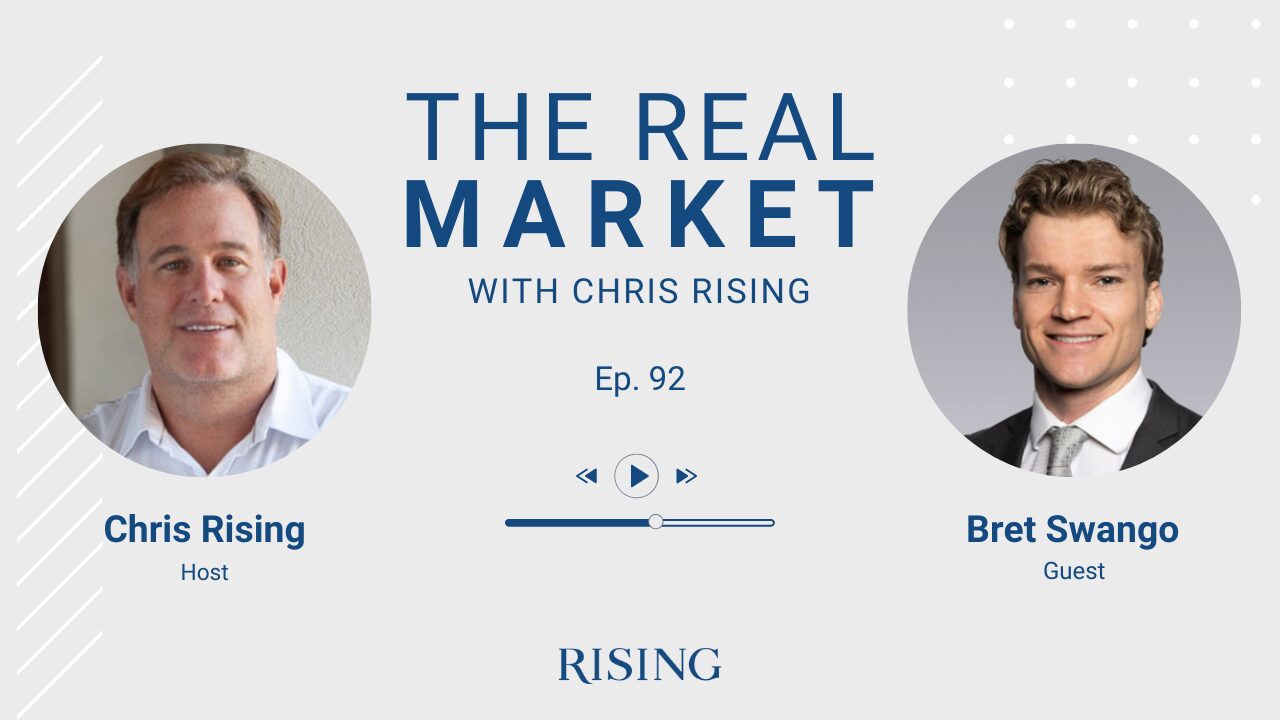
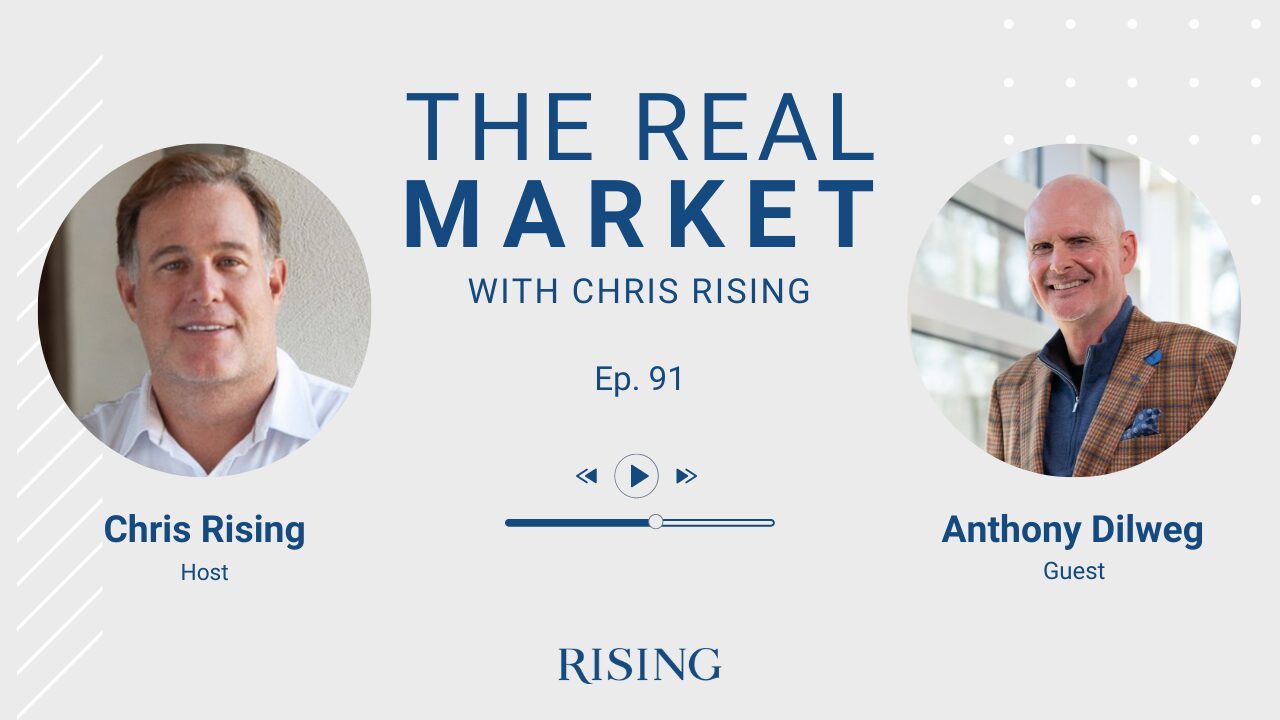
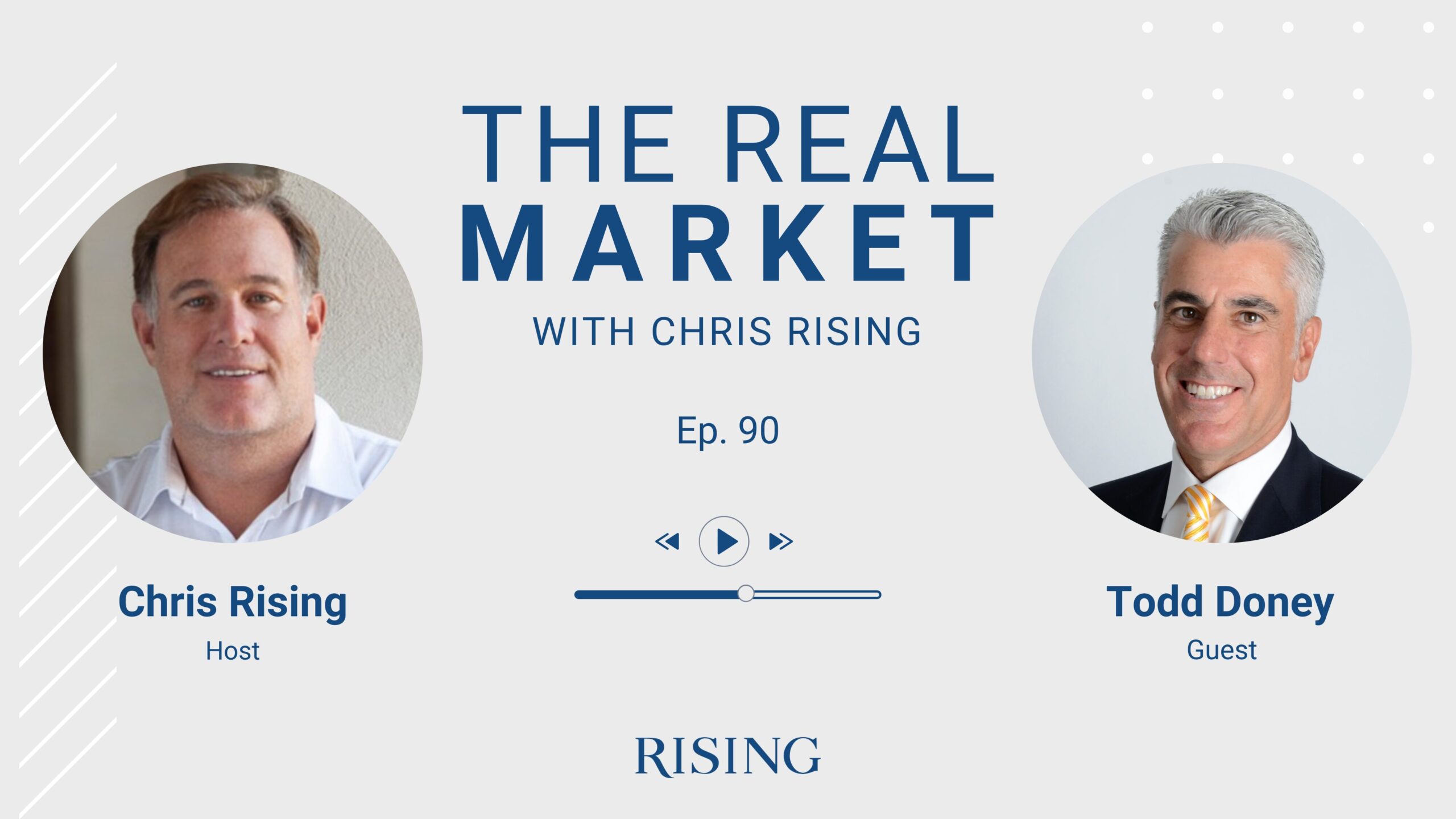
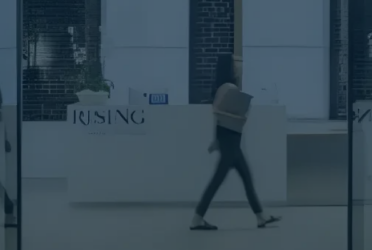

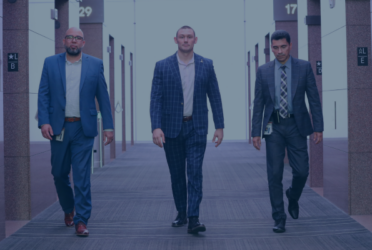
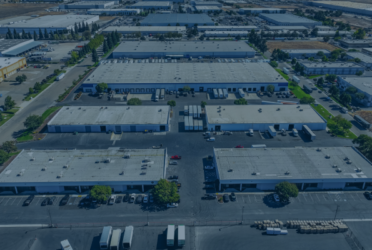
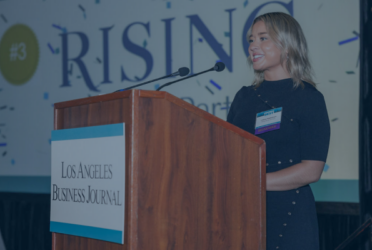
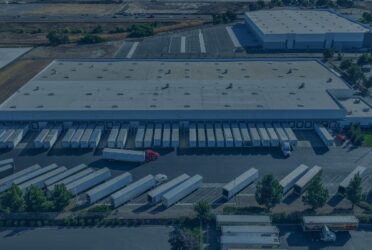
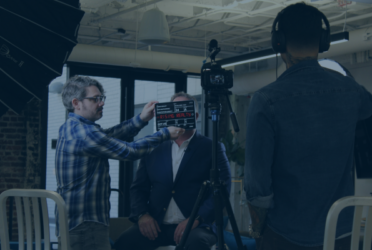
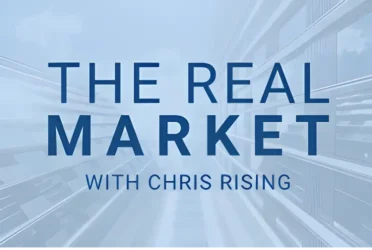 Podcast
Podcast